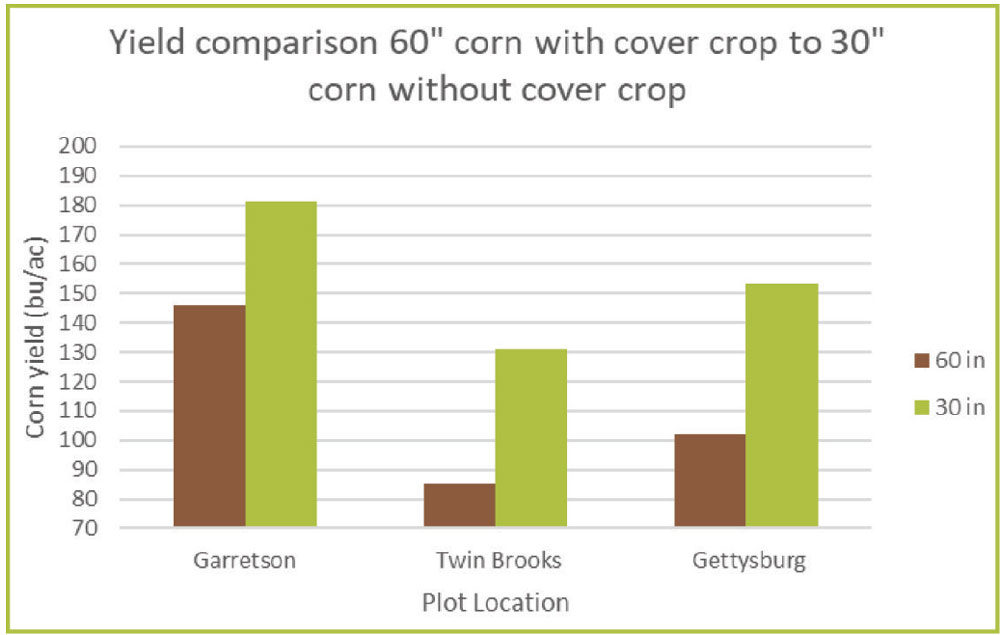No-Till Farmer
Get full access NOW to the most comprehensive, powerful and easy-to-use online resource for no-tillage practices. Just one good idea will pay for your subscription hundreds of times over.

No-tillers across the Corn Belt have been experimenting with wider corn rows to diversify their corn management and add cover crop options to their operation, including grazing of covers as an added income and soil health option.
The Pierre, S.D.-based South Dakota Soil Health Coalition organized a study of this system last year. It compared corn production management options of 60-inch corn rows with cover crops seeded in the wide rows to standard 30-inch corn rows without cover crops between the rows.
Farmers in states like South Dakota face challenges to incorporating cover crops in corn/soybean rotations due to the short window of opportunity to establish covers before or after the main cash crop. Some farmers and researchers report that seeding covers between 30-inch rows generally delivers inconsistent results for many reasons, most of which correlate to the amount of sunlight the covers get between the corn rows.
Advocates of the wide-row system say it lets more sunlight reach the cover crop seedlings and surface area of the corn plant, while the 30-inch-or-narrower corn rows limit sunlight that reaches the bottom two-thirds of the plant.
In this study, corn grain yield, moisture, and protein content were compared between the two options. Researchers and farmers in this project wanted to find…